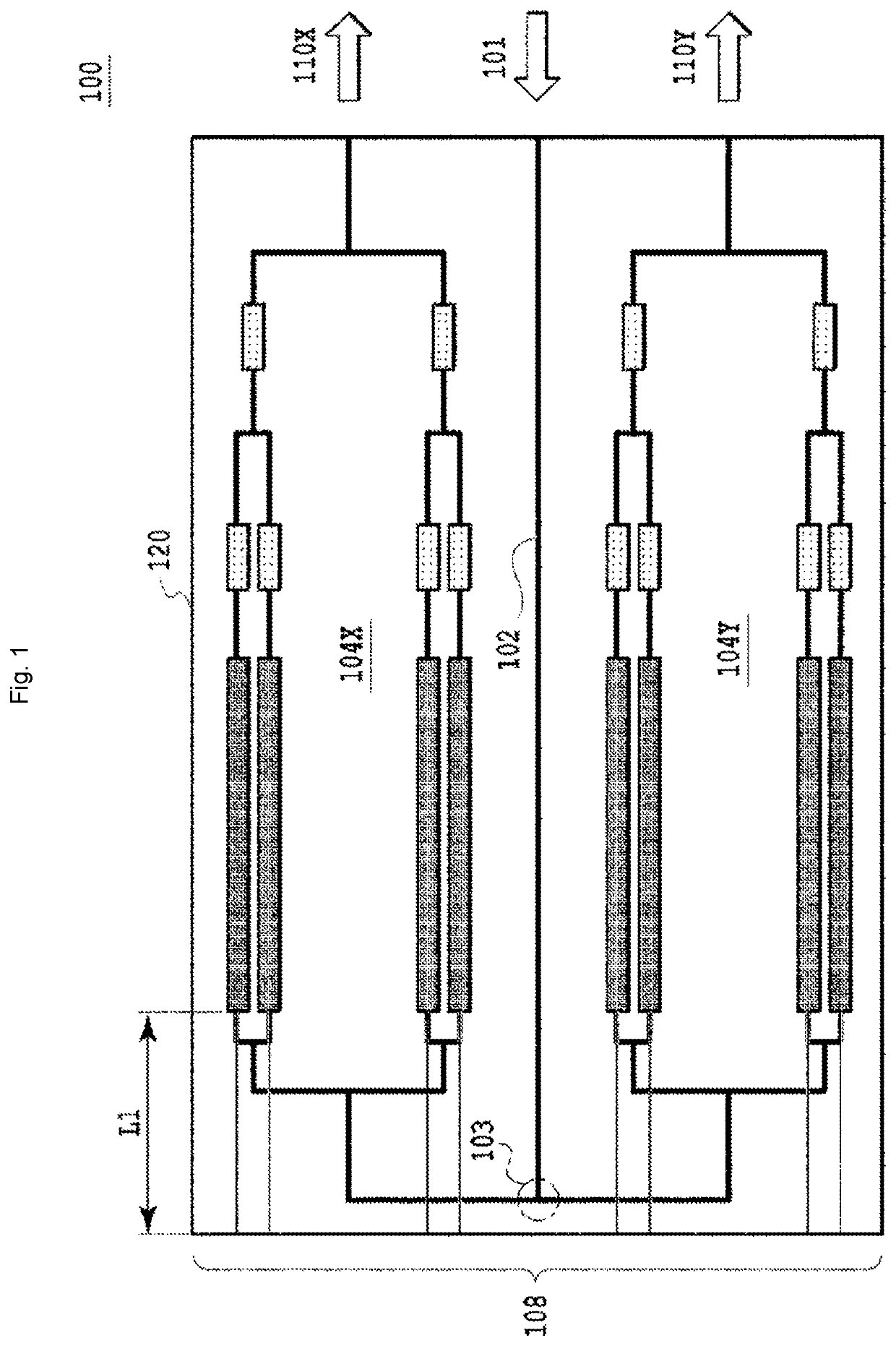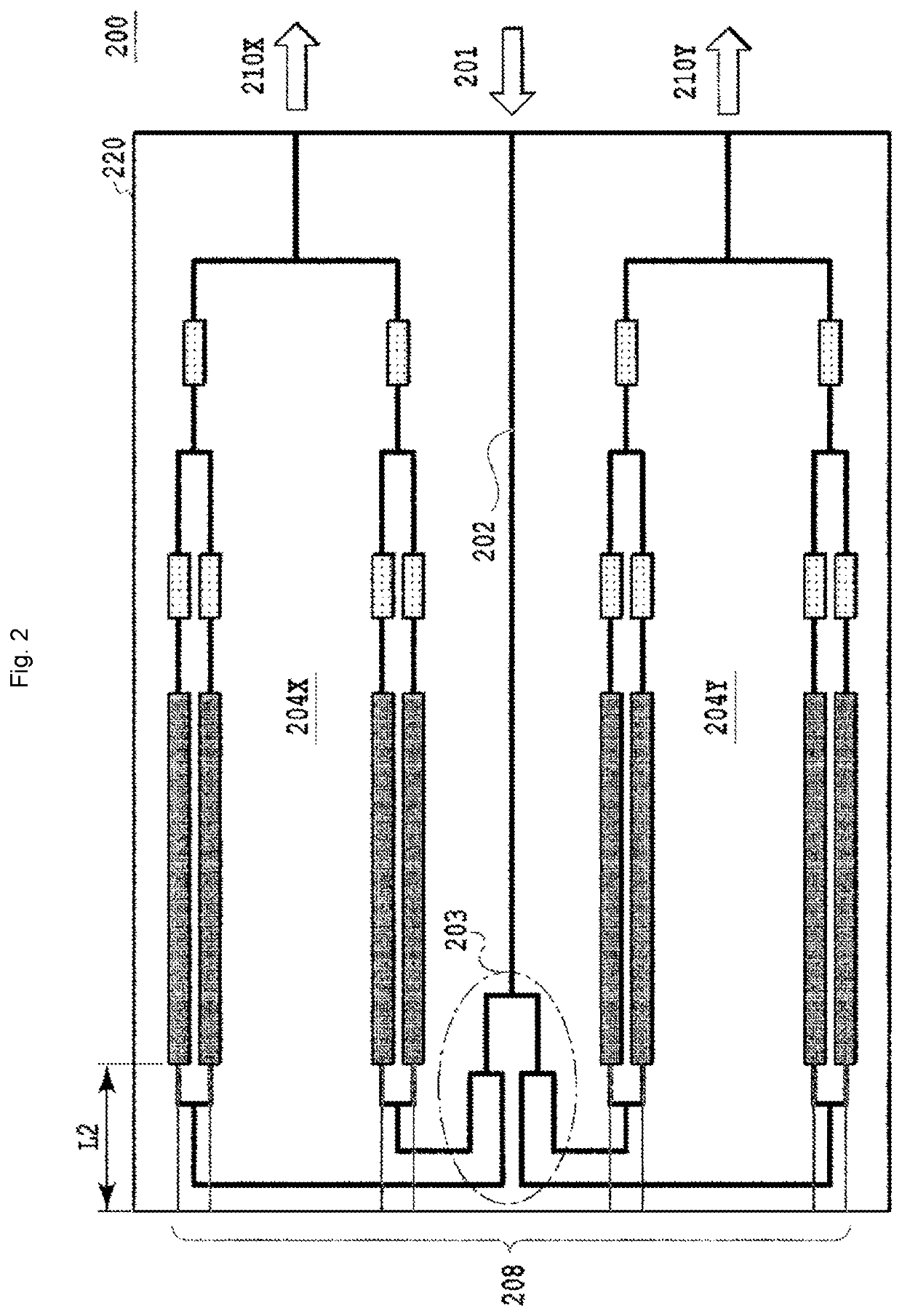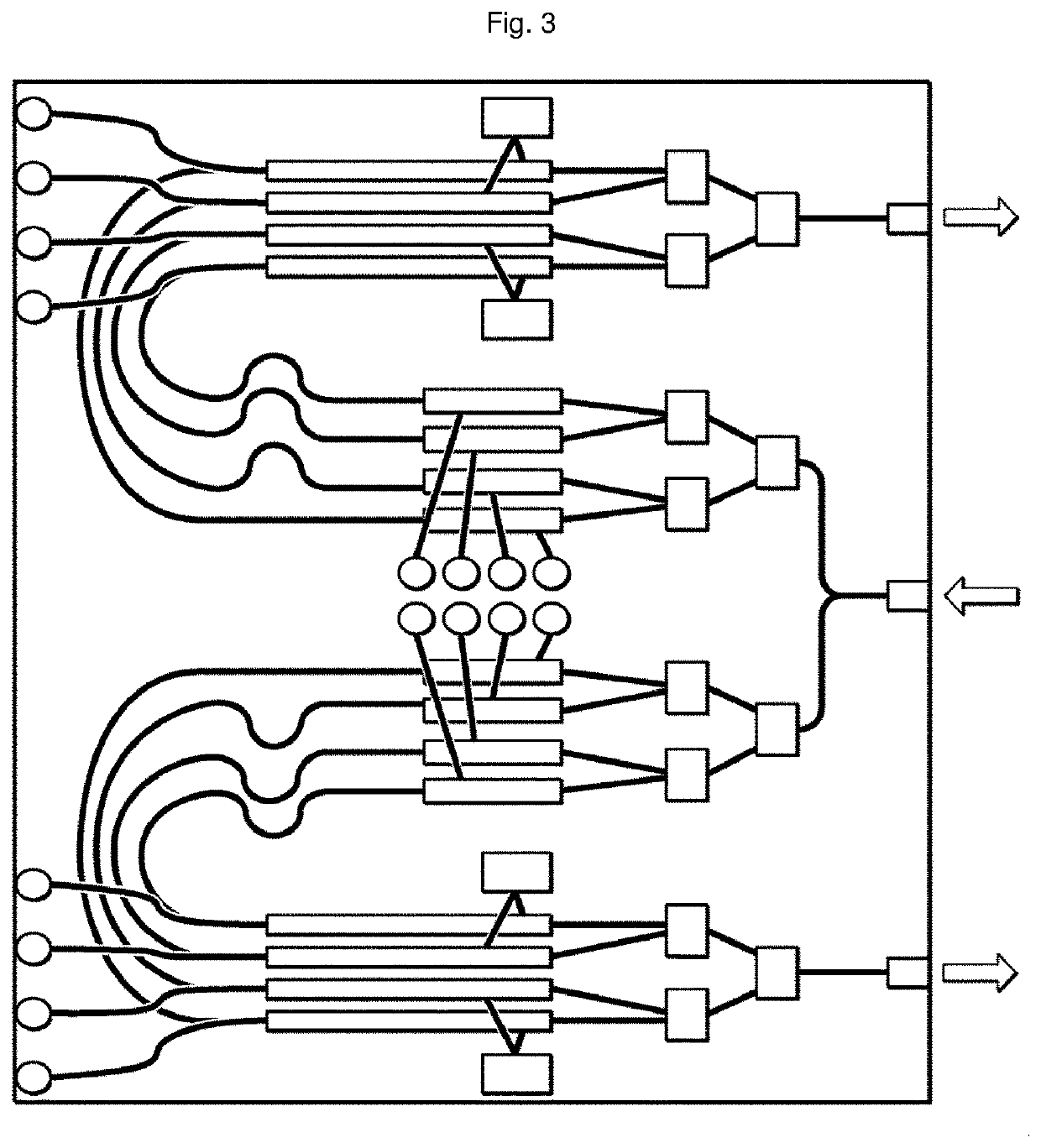IQ Optical Modulator
a technology of optical modulator and modulator, applied in the field can solve the problems of optical loss, high-frequency characteristics degradation, operation stability problems, etc., and achieve the effect of improving the high-frequency characteristics of iq optical modulator and suppressing the temperature fluctuation of the difference in characteristics between iq channels
- Summary
- Abstract
- Description
- Claims
- Application Information
AI Technical Summary
Benefits of technology
Problems solved by technology
Method used
Image
Examples
example 1
[0061]FIG. 6 is a chip plan view of an IQ optical modulator according to Example 1. The IQ optical modulator 600 of Example 1 is a single-polarization IQ optical modulator that has an I-channel optical modulation region 604a and a Q-channel optical modulation region 604b that form child MZMs of a single nest-type MZM on the chip 620.
[0062]The IQ optical modulator 600 of FIG. 6 is an IQ optical modulator including a nest-type MZ optical waveguide that forms the I channel optical modulation region 604a and the Q channel optical modulation region 604b as a child MZM. The end portions of the input optical waveguide 601 of the light input part and the output optical waveguide 610 of the light output part are located on the same edge face (right edge face in FIG. 6) of the chip 620.
[0063]On the other hand, an optical waveguide connecting a first optical combiner 607b that is an optical combiner of a child MZM, for example, on the Q-channel side, and a second optical combiner 609 that is a...
example 2
[0069]An IQ optical modulator 700 of Example 2 illustrated in FIG. 7 is a polarization-multiplexed IQ optical modulator in which the two IQ optical modulators 600 of Example 1 are integrated in parallel on the chip 720 for X and Y polarization channels to form a polarization-multiplexed IQ optical modulator. The configuration in which total four MZ modulators are integrated on the chip 720 is used in actual polarization-combined systems.
[0070]In the polarization-multiplexed IQ optical modulator 700 of FIG. 7, light input from the input optical waveguide 701 is divided by an XY polarization divider 730 into X and Y polarization channels, and via the optical cross waveguides 702X and 702Y, the light is drawn between the IQ channel optical modulation regions 704XI and 704XQ or 704YI and 704YQ of each polarization channel, and thereafter the light is divided, folded back, and modulated. The modulated light is then combined by each polarization channel, and finally output as X-polarizati...
example 3
[0071]FIG. 8 illustrates a polarization-multiplexed IQ optical modulator 800 according to Example 3. The IQ optical modulator 800 according to Example 3, in the configuration of the polarization-multiplexed IQ optical modulator 700 according to Example 2, the second optical dividers 806XI and 806XQ (with respect to the Y-polarization side, element symbols in FIG. 8 are omitted) that are the optical dividers of the child MZMs are also provided between the I-channel optical modulation region and the Q-channel optical modulation region, and the light propagation direction in the second optical dividers and the light propagation direction in the optical modulation regions are opposite (180°).
[0072]With the configuration according to Example 3, the DC phase adjusters 808XIa, 808XQa, 808XIb, and 808XQb (with respect to the Y-polarization side, element symbols in FIG. 8 are omitted) provided in the waveguides of the child MZMs can be formed before the turning position, so that the DC phase...
PUM
| Property | Measurement | Unit |
|---|---|---|
| speed | aaaaa | aaaaa |
| optical phase | aaaaa | aaaaa |
| temperature fluctuation | aaaaa | aaaaa |
Abstract
Description
Claims
Application Information
 Login to View More
Login to View More - R&D
- Intellectual Property
- Life Sciences
- Materials
- Tech Scout
- Unparalleled Data Quality
- Higher Quality Content
- 60% Fewer Hallucinations
Browse by: Latest US Patents, China's latest patents, Technical Efficacy Thesaurus, Application Domain, Technology Topic, Popular Technical Reports.
© 2025 PatSnap. All rights reserved.Legal|Privacy policy|Modern Slavery Act Transparency Statement|Sitemap|About US| Contact US: help@patsnap.com



